Extracting bitstream from received signal.
The conversion of the demodulated signal (the split-phase signal) into a serial bit stream needs special attention. In the current decoder this is done as follows:
This method works fine for strong signals, like HRPT.
However, with PDUS the received signal is too weak to get a usable picture.
A few circuits have been tried out to deterimine how to get usable
PDUS pictures, using antennas of max. 1.5 m:
- By means of an analog integrator, working at the signal before clamping it to TTL level.
- By means of a digital integrator, working at the TTL-level signal (invented by Harry v. Deursen)
Both methods give a considerable enhancement. The second one is suitable
to build into the FPGA, which minimizes the amount of extra needed
hardware.
Results new bit-extractor.
The conversion analog-to-TTL has been improved by means of a LPF filter in the analog part. This simple filter gives already much better results!
The digital integrator has been added to the PDUS decoder. Result: Again a big improvement!
Simulations.
Next pictures show simulation results of the analog and digital integrator.
- A=noise free split-phase signal
- B=noisy split-phase signal
- C=integration result
- D=sample moment
| Result without integrator. |
| Low noise |
High noise |
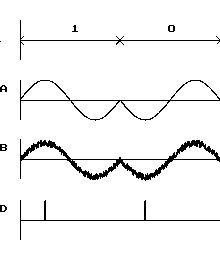 |
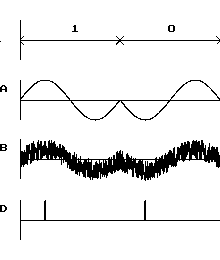 |
| Result with analog integrator (in front of decoder) |
| High noise |
Very high noise, half period integration |
Very high noise, full period integration |
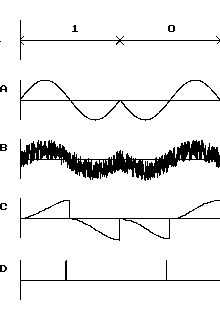 |
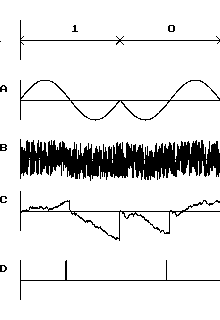 |
 |
| Result with digital integrator (in FPGA). |
| No noise |
Very high noise |
 |
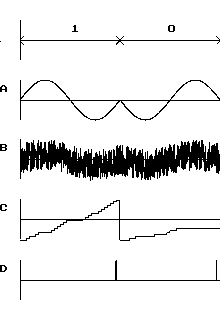 |
Conclusions
For HRPT, the receiver/decoder as-is is good enough to get usable pictures.
However, a low pass filter before going to TTL level is easy to add, and will probably give a considerable improvement (usable signal at low elevations and/or smaller antenna).
For PDUS at least the bit-integrator is a 'MUST' to get usable pictures.








